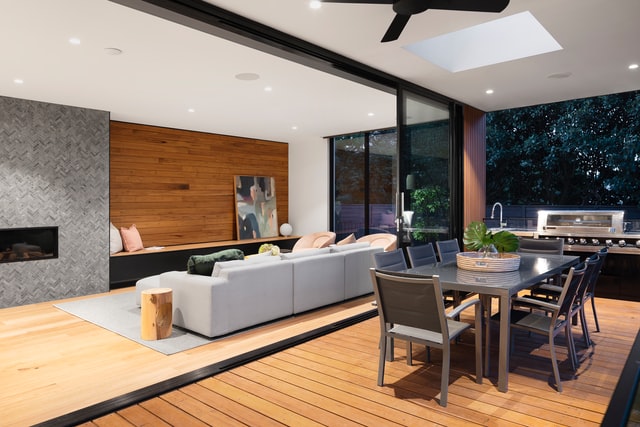Our homes are our havens, where we rest, recoup, and unwind at the end of the day. Your home’s features, like the colour of the walls, the art on display, and the amount of clutter, also impact your physical and emotional wellbeing.
Are you looking for the best supplier to supply you with quality construction materials to help renovate your home? Get building materials from Materials Market and create a relaxing home. Here are some interior decorating ideas and home design tips to reduce your anxiety and enhance the general wellbeing of your house.
Utilise Soothing Hues
Allow colour to be your co-creator of tranquility to make sure that your home design contributes more to settling you down than increasing your tension. In other words, choose your colours carefully while decorating to reduce anxiety. According to studies, the various paint colours that ease stress include blue, violet, white, pink and green tones.
Contrarily, striking colours, like red, are linked to heightened stress reactions. Let’s imagine you battle anxiety but want to decorate with vibrant colours. Choose a softer rendition of your favourite colour; for example, choose a soft pastel red instead of a bright red in your living room. Without the anxiety-inducing side effect of a paint hue that makes you uneasy, your area still benefits from the delightful splash of colour.
Consider Your Sleep Quality
Nothing beats sleeping on an uncomfortable bed, particularly for extended periods. Not only can our mattress affect our physical health, but it also significantly impacts our mental health. Uncomfortable mattresses and messy bedrooms are stressful and might affect the amount of deep sleep we receive each night.
Replace your mattress at least every seven years to ensure it is comfy. After you’ve polished the bed for your requirements, you may concentrate on the entire room design. Walking into a relaxing and elegant bedroom will set the tone for a restful night’s sleep.
Bring In Nature
There’s a reason you enjoy house plants so much and find plant-filled environments so appealing. Whether you realise it or not, biophilic designs that reconnect you to nature increase your happiness tenfold.
According to research, surroundings devoid of nature significantly impact a person’s mental and physical health. For example, plants could lower stress and health issues such as anxiety. House plants are so crucial to our interior environment that NASA studies the best plants for your house and their air-purifying qualities.
Allow Space
Use negative or white space to provide breathing room around things in your house while designing to relieve tension. Consequently, this may give the illusion of a more significant area, especially in smaller spaces. The perception of a more substantial space makes rooms seem less closed off, which may act as an anxiety buffer.
For example, leave accessible areas on shelves. Allow plenty of room between objects such as your couch and the wall. If you can’t figure out how to implement this idea, employ a professional. The experts may advise on decorating practically while also providing (physical and metaphorical) space for leisure.

Create A Comfort Zone
It would be best if you adapt your choice of a relaxing activity to the space in your house. Whether meditating, reading or listening to music, you don’t need to dedicate a whole room to this purpose. Instead, choose a location that is out of the way of the primary flow of activities in the home. At some point in their lives, we all need an “escape.”
Parting Word
The home design tips above will clear your head, show you how to cultivate a more optimistic outlook, and turn your house into a more enjoyable place to spend time. Therefore, making even a slight change in how you design your home using the best materials may help relieve anxiety and other wellbeing issues.


























